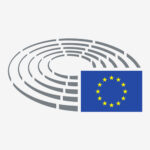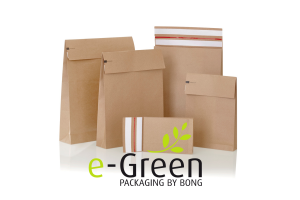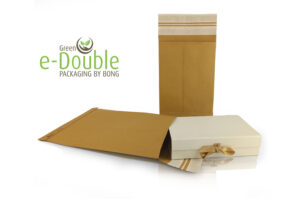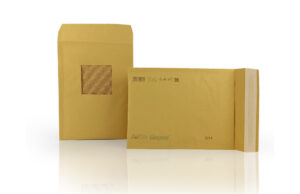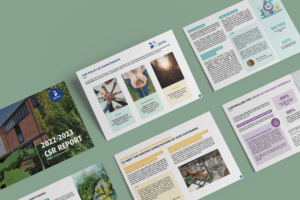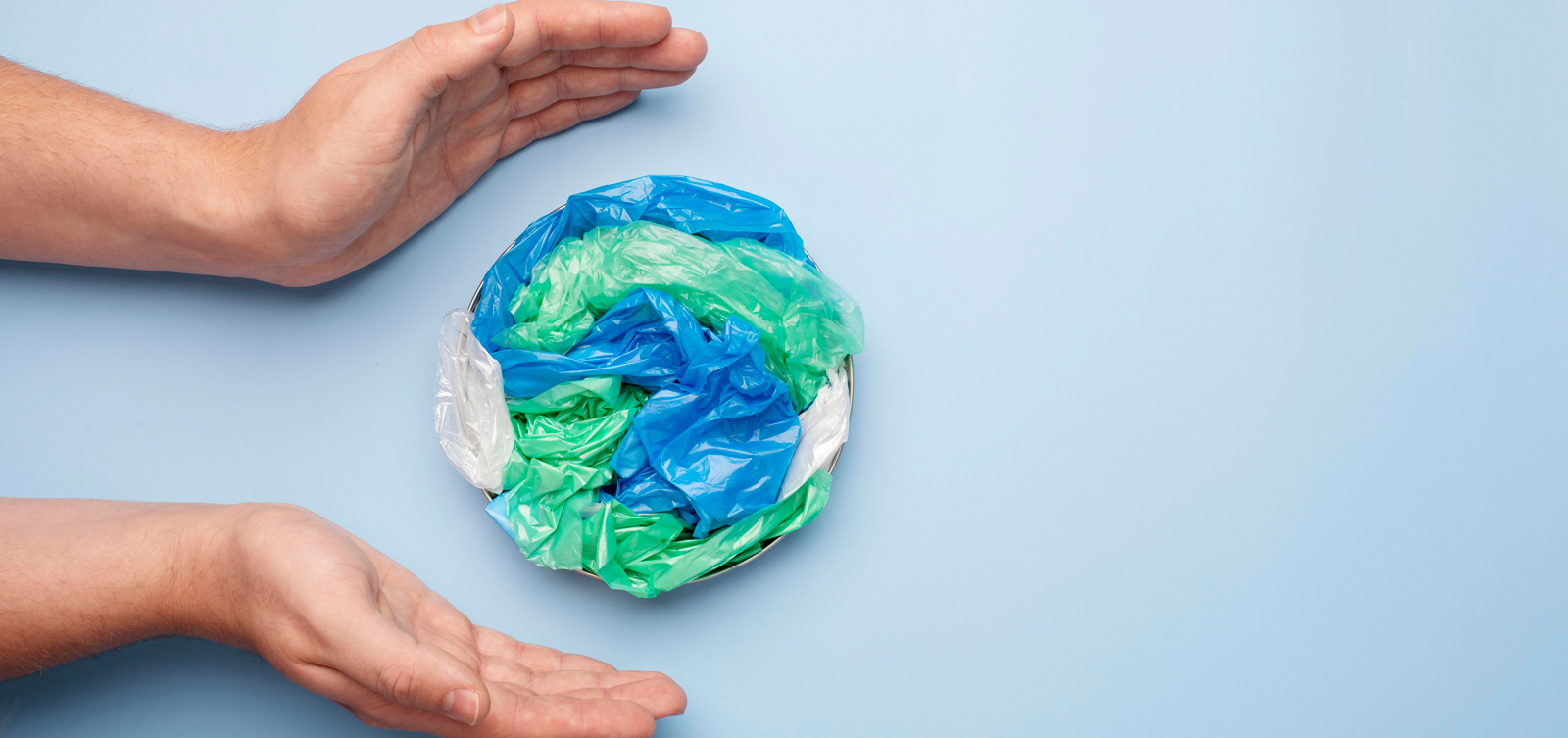
09 01 2024
Decoding PPWR - 10 key measures from the Packaging and Packaging Waste Regulation
On November 22, 2023, the European Parliament voted on the Packaging and Packaging Waste Regulation (PPWR). This new regulation aims to provide a common legislative framework for all European Union member states to achieve waste reduction goals. We analyze the key measures and requirements imposed by this new regulation on EU countries and economic actors in the field of packaging.
Glossary: What does the concept of "packaging" refer to in the PPWR regulation?
“Items made of materials of all kinds, intended to contain and protect products or facilitate their handling, transport, or presentation, and differentiated into packaging formats based on their function, materials, and design.”
Diagnosis: "Packaging is a major environmental concern"
In the first paragraphs of the project, the Packaging and Packaging Waste Regulation acknowledges the following diagnosis: “packaging has increased (…) leading to a surge in CO2 and other emissions, as well as overexploitation of natural resources, loss of biodiversity, and pollution.”
Several alarming observations at the European level underlie this regulation project:
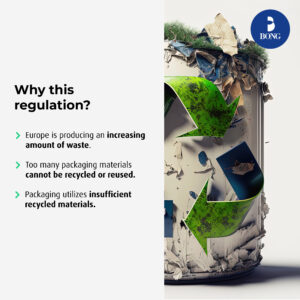
- Europeans are producing more and more waste. On average, each European generates nearly 180 kg of packaging waste per year. If nothing is done, this weight is likely to increase by 19% by 2030 (even by 46% for plastic waste).
- Too many packagings are not designed to be easily recyclable or reusable. Labeling to help consumers properly sort their packaging waste is unclear.
- Packaging, especially plastic packaging, uses too few recycled materials (secondary raw materials) in their production.
Mission: "Reduce the negative impacts of packaging on the environment"
Citizens demand strict measures on waste prevention, packaging waste management, and circularity of packaging by using more recycled materials.
On November 22, 2023, faced with these forecasts and ecological awareness, the Parliament voted on the Packaging and Packaging Waste Regulation project submitted by the Environment Commission.
The legislative proposal adopted by the European Parliament aims to “reduce the negative impacts of packaging and packaging waste on the environment” by establishing requirements throughout the life cycle of packaging, from the choice of raw materials to final disposal, for all EU member states.
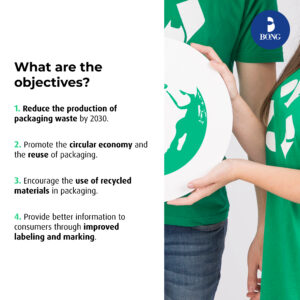
The regulation aims, in particular, to:
- Reduce waste production, excessive packaging, especially plastic waste, by 5% by 2030 (compared to 2018);
- Ensure the recyclability of all plastic packaging;
- Promote the circular economy and reuse of packaging;
- Increase the incorporation of recycled materials and the use of secondary raw materials in packaging manufacturing;
- Provide better information to consumers through improved labeling and marking of packaging.
Focus on 10 key measures from the Packaging & Packaging Waste Regulation
Measure #1: 100% of packaging must be recyclable by 2030
Starting January 1, 2030, packaging, regardless of the materials used (cardboard, paper, plastic, etc.), must be designed to be recyclable.
Packaging is considered recyclable when it meets the following conditions:
- Designed for recycling;
- Collected separately in an effective and efficient manner;
- Directed to a well-defined waste stream without compromising the recyclability of other waste streams;
- Recyclable so that the resulting secondary raw materials are of sufficiently high quality to replace primary raw materials;
- Recyclable on a large scale (from 2035).
Starting January 1, 2030, packaging will not be considered recyclable if it falls into performance class E.
Chapter II on “Sustainability Requirements” – Article 6
Measure #2: Mandatory use of recycled materials in plastic packaging
Starting January 1, 2030, plastic packaging – or the plastic part of packaging – must contain a minimum percentage of recycled materials recovered from plastic waste.
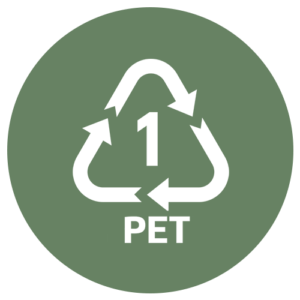
30 %
for packaging for contact-sensitive products whose main component is polyethylene terephthalate (PET)
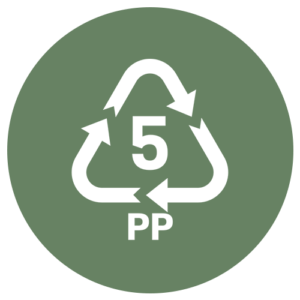
10 %
for packaging for contact-sensitive products made from plastic materials other than PET, excluding single-use plastic beverage bottles;
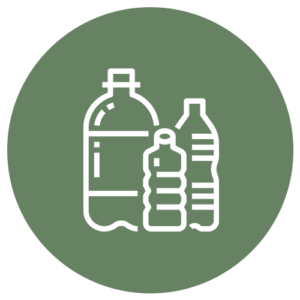
30 %
for single-use plastic beverage bottles;
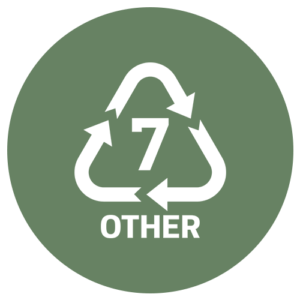
35 %
for packaging other than those mentioned just before
From 2040, the minimum percentage of recycled content from plastic waste recovery increases to 50%, except for single-use plastic bottles (65%).
Chapter II on “Sustainability Requirements” – Article 7
Measure #3: Reduce the weight and volume of packaging to the maximum
This measure aims to reduce excessive packaging and empty space.
The weight and volume of packaging must be minimized, taking into account the safety and functionality of the packaging. Packaging with features aimed solely at increasing the perceived volume of the product (double walls, double bottoms, unnecessary layers, etc.) cannot be marketed. Compliance with this obligation must be proven by technical documentation.
Empty space – especially during the transport of goods – must be minimized. Spaces filled with paper shavings, air cushions, bubble wrap, or other cushioning materials are considered empty space.
Chapter II on “Sustainability Requirements” – Article 9
Measure #4: Provide for the reuse of packaging
This measure aims to promote reuse and the circular economy. To be considered reusable, packaging must be designed, created, and marketed with the intention of being reused (or refilled) several times and for a use similar to that for which it was designed.
Reuse must be planned and organized by the producer. The producer must inform the end consumer about the reuse options for the specific packaging.
Chapter II on “Sustainability Requirements” – Article 10
Measure #5: Inform about the materials used to design the packaging
No later than 42 months after the regulation comes into effect, packaging must bear a label clearly indicating the materials that make up the packaging. While this measure does not apply to transport packaging, it applies to e-commerce packaging.
Chapter III on “labelling, marking and information requirements” – Article 11
Measure #6: Inform about the reuse of packaging
No later than 48 months after the regulation comes into effect, packaging designed to be reused must have a label indicating reuse possibilities and a clearly visible and indelible QR code (or other digital support) to provide additional information on reuse.
Chapter III on “labelling, marking and information requirements” – Article 11
Measure #7: Provide for the reuse of transport packaging
Companies using transport packaging in the form of pallet packaging and straps to transport their products must ensure that 10% of this transport packaging is reusable as of January 1, 2030. The percentage will increase to 30% on January 1, 2040.
Companies using transport packaging in the form of pallets, plastic crates, foldable plastic boxes, buckets, and drums must ensure that 30% of this transport packaging is reusable as of January 1, 2030. The percentage will increase to 90% on January 1, 2040.
Chapter IV on “obligations of economic operators” – Article 26
Measure #8: Packaging will undergo a EU conformity declaration
Packaging or packaging material suppliers must provide all necessary information and documentation (paper or electronic format) to enable the manufacturer to demonstrate compliance with the Packaging and Packaging Waste Regulation.
Chapter IV on “obligations of economic operators” – Article 14
Measure #9: States must reduce the quantity of packaging waste per capita
Each member state of the European Union must gradually reduce the packaging waste produced per capita compared to 2018:
-5 %
by 2030
-10 %
by 2035
-15 %
by 2040
Chapter VII on “management of packaging and of packaging waste” – Article 38
Measure #10: States must achieve specific recycling goals
65 %
at least, by weight of all packaging waste produced by December 31, 2025, must be recycled.
70 %
at least, by weight of all packaging waste produced by December 31, 2030, must be recycled.
Chapter VII on “management of packaging and of packaging waste” – Article 46
PPWR Regulation: between negotiations and complex implementation
After its approval by the European Parliament on November 22, 2023, the Regulation on Packaging and Packaging Waste was submitted on December 18, 2023, to the environmental ministers of the member states during the Council of the European Union. The Twenty-Seven negotiated extensively to consider the interests of different countries. The result? The Council maintains the ambition to reduce the production of packaging waste while allowing member states sufficient flexibility in implementing the regulation. The application of the text is also delayed by one year, 18 months after adoption.
On its part, France did not wait for the intervention of the European Parliament to encourage waste reduction, combat waste, and notably put an end to single-use plastics with the adoption of the AGEC law (Anti-Waste Law for a Circular Economy) in 2020.
Bong: a packaging expert committed to the planet
At Bong, as a committed partner, we have developed product ranges designed to limit their impact on the environment. It is our duty to act now to move towards a circular economy by improving each stage of the product’s life cycle so that, in the end, it becomes a usable raw material for new products. We have also committed ourselves to providing a paper alternative for every plastic-based product demand. For instance, we offer alternatives to plastic shipping bags by developing FSC® paper e-commerce solutions that are durable, recyclable, and suitable for most e-commerce products, and some are reusable thanks to the double adhesive strip that facilitates customer returns.

